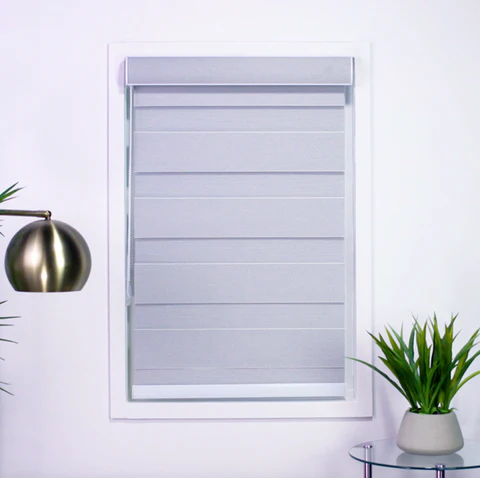
The window is often overlooked when designing a room, but it can have a major impact on your room’s aesthetic. Blinds have always been a popular substitute for curtains because of the many ways they can be used to enhance a home’s aesthetics and functionality, including the management of natural light, the regulation of temperature through reflection, and the protection of personal privacy. Identifying your needs before shopping for blinds is essential. Here are some suggestions for how to go about choosing window blinds, and tips for keeping those blinds in good condition over time.
What to Consider
- Is the blind intended for a bedroom in which darkness is desired? Consider room-darkening roller or roman blinds for your bedroom; these blinds don’t have any peepholes or slats that would let light in.
- Do you want it in a moist space, like a bathroom or kitchen? Avoid using linen, silk, and wood since they deteriorate, twist, and fade when exposed to high humidity. Instead, go with faux wood blinds or blinds made from synthetic materials like PVC and polyester, or rust-proof aluminum Venetians.
- Does your room let in a lot of natural light? Venetian and vertical blinds are great for blocking the sun’s rays while letting in ambient light.
Tips for Choosing the Right Blind Size
- You’ll need to determine if you want your blinds to extend beyond or into the window casing.
Provide precise measurements for the width and drop of the area outside the recess covering the window. - Use the smallest of the three width measurements (top, middle, and bottom) and the three drop measurements (left, center, and right) to ensure that the blind fits snugly within the recess.
- Fabric tapes can stretch and become inaccurate, so always use a metal tape measure. There is nothing worse than getting a blind that doesn’t fit your window, so take your measurements in millimeters rather than inches or centimeters.
Tips for Maintaining Clean Blinds
Cleaning Aluminum Venetian Blinds
- When cleaning aluminum blinds, use a damp cloth or a mild spray cleaner, then wipe down and let dry completely to remove any stains.
- Ultrasonic technology can be used by professionals to clean your blinds as well.
Cleaning Roller Shades
- Using a vacuum or compressed air, clear the dust off the roller blinds.
- Roller blinds can be cleaned with a sponge or soft brush immersed in soapy water. After cleaning, rinse the surface with fresh water, then hang the blinds until they are completely dry.
- To avoid damaging the blinds’ coating, avoid using harsh cleaning methods such as scrubbing, chemicals, or abrasives.
Cleaning Thermacell Blinds
- A duster should be used regularly to dust the shade. The majority of the time, this is the only type of cleaning required.
- Dust can be removed by vacuuming using a hand-held unit. Put it on a low suction setting and use a long bristles attachment.
- To remove a spot, wet a clean cloth in warm water and a mild detergent solution, and blot the area until the stain disappears. Don’t scratch or rub too hard. The fabric should be hung down to dry.
- A skilled service can ultrasonically clean your shades. The head rail should never be submerged and only a mild solution should be used. Reinstall the shade and let the material dry with the shade fully lowered.
Cleaning Wooden Venetian Blinds
- Dusty wooden Venetian blinds can be cleaned using a vacuum or compressed air.
- Use a moist towel to clean wooden Venetian blinds.
- Do not use harsh cleaning methods on the slats, such as scrubbing, chemicals, or abrasive materials.
Cleaning PVC Venetian Blinds
- Use a vacuum cleaner or compressed air to get rid of the dust on your PVC Venetian blinds.
PVC Venetian blinds can be cleaned with a moist cloth. - Do not use harsh cleaning methods on the slats, such as scrubbing, chemicals, or abrasives.
- Window blinds can remain in your house for a long time, so it’s vital to clean and maintain them appropriately to help preserve their appearance and longevity.

